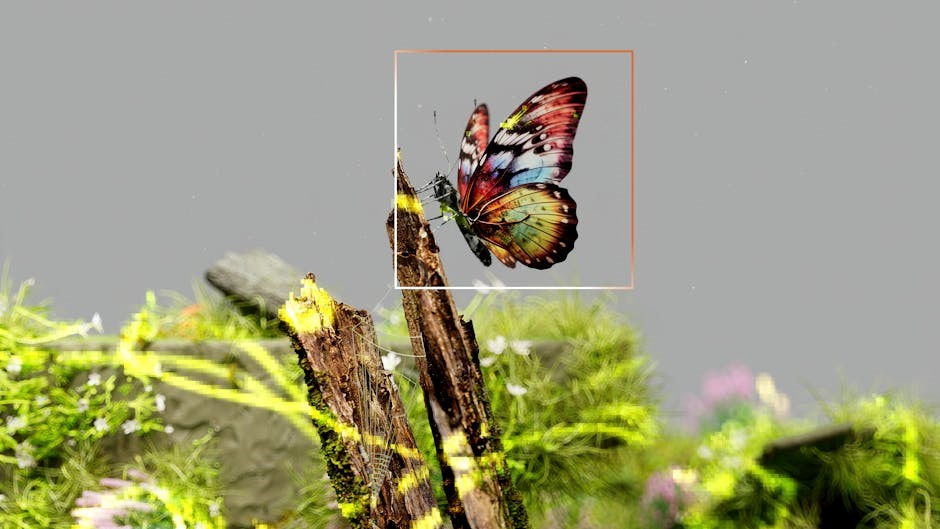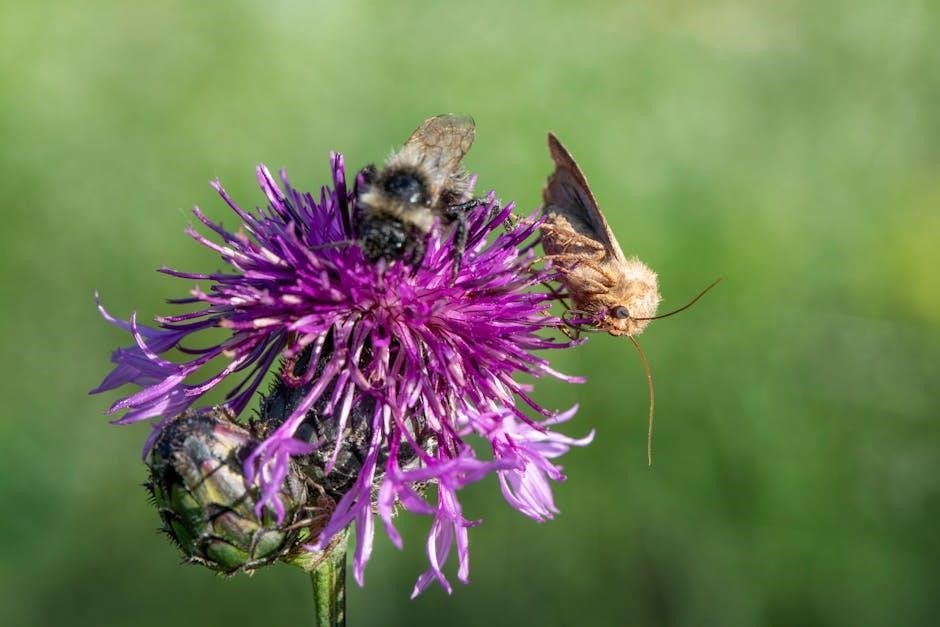
Identifying house insect eggs requires knowledge of various species and characteristics, using online resources and magnification tools to determine the type of insect and prevent infestations effectively always matters․
Understanding the Importance of Identification
Identifying house insect eggs is crucial for maintaining a clean and healthy home environment, as some insects can cause significant damage to property and pose health risks to occupants․
The importance of identification lies in the ability to determine the type of insect and take appropriate measures to prevent infestations, which can lead to costly repairs and treatments․
Insect eggs can be found in various locations, including window screens, wood, and other areas, making it essential to recognize the signs of infestation and take action promptly․
Understanding the importance of identification is the first step in effectively managing insect infestations and preventing future occurrences․
By recognizing the need for identification, homeowners can take proactive steps to protect their properties and ensure a safe and healthy living environment․
This understanding is vital for maintaining a pest-free home and preventing the spread of diseases and damage caused by insects․
Proper identification is key to effective pest control and prevention, and it is essential to educate oneself on the different types of insect eggs and their characteristics․
This knowledge will enable homeowners to make informed decisions and take the necessary steps to prevent infestations and maintain a clean and healthy home environment․

Characteristics of Insect Eggs
Insect eggs have unique shapes, sizes, and colors, with some being round, oval, or cylindrical, and varying in texture and appearance, requiring careful examination for identification purposes always․
Shapes and Sizes of Insect Eggs
Insect eggs can be found in various shapes and sizes, ranging from round to oval, and even cylindrical or flat․ Some eggs are as small as specks, while others can be larger, resembling pellets․ The shape and size of the egg can be a crucial factor in identifying the type of insect it belongs to․ For instance, mosquito eggs are typically around one millimeter in length, while wasp eggs are usually about the size of a sand grain․ Understanding the different shapes and sizes of insect eggs can help in narrowing down the possibilities when trying to identify them․ By examining the shape and size of the egg, one can begin to make an educated guess about the type of insect it may belong to, and then use additional characteristics to confirm the identification․ This information is essential for effective pest control and management․
Color and Texture of Insect Eggs
The color and texture of insect eggs can also provide valuable clues for identification․ Some eggs are white, while others may be yellow, brown, or even gray․ The texture of the egg can range from smooth to ridged or pitted․ Termite eggs, for example, are typically white and oval in shape․ The color and texture of the egg can be influenced by the type of insect and the environment in which it is laid․ By examining the color and texture of the egg, one can gain a better understanding of the insect’s characteristics and habits․ Online resources and magnification tools can be used to get a closer look at the egg’s color and texture, helping to determine the type of insect it belongs to․ This information can be used to develop effective strategies for managing and controlling insect populations in the home․ Effective identification is crucial for pest control․

Common Types of Insect Eggs Found in Houses
Insect eggs found in houses include termite, mosquito, and wasp eggs, each requiring unique identification methods and control strategies always and effectively every time and place matters online․
Termite Eggs Identification
Termite eggs are typically small, white, and oval in shape, often laid in clusters within the colony’s nest, which can be found in wood or other cellulose-based materials․
The identification of termite eggs can be challenging due to their small size and hiding within the nest, requiring careful examination and magnification․
Online resources and pest control professionals can provide guidance on identifying termite eggs and developing effective control strategies to prevent infestations․
Termite eggs are usually difficult to spot, but knowing the characteristics and habits of termites can help in identifying their eggs and taking necessary actions to prevent damage to properties․
Termite eggs are a sign of a larger termite problem, and identifying them is crucial in preventing further infestations and damage to homes and buildings․
Identifying termite eggs requires patience, attention to detail, and knowledge of termite behavior and habits, making it essential to seek professional help when needed․
Insect eggs, including termite eggs, can be identified using various methods, including online databases and magnification tools, to determine the type of insect and develop effective control strategies․
Termite eggs are a critical part of the termite life cycle, and understanding their characteristics and habits is essential in preventing termite infestations and damage to properties․
Mosquito Eggs Identification
Mosquito eggs are typically small, about one millimeter in length, and can be difficult to identify without magnification․
They are often laid in standing water or moist environments, and can hatch into larvae within a few days․
Mosquito eggs can be identified by their unique shape and size, and by the presence of a distinctive pattern or marking․
Online resources and pest control professionals can provide guidance on identifying mosquito eggs and developing effective control strategies to prevent infestations․
Mosquito eggs are a sign of a potential mosquito problem, and identifying them is crucial in preventing the spread of diseases like malaria and Zika virus․
Identifying mosquito eggs requires attention to detail and knowledge of mosquito behavior and habits, making it essential to seek professional help when needed․
Mosquito eggs can be found in a variety of locations, including flowerpots, bird baths, and clogged drains, and can be controlled by eliminating standing water and using insecticides․
Mosquito eggs are a critical part of the mosquito life cycle, and understanding their characteristics and habits is essential in preventing mosquito infestations and reducing the risk of disease transmission․
Wasp Eggs Identification
Wasp eggs are typically small, about the size of a sand grain, and can be white or light-colored․
They are often laid in protected areas, such as nests or burrows, and can be difficult to identify without magnification․
Wasp eggs can be identified by their shape and size, and by the presence of a distinctive pattern or marking․
Online resources and pest control professionals can provide guidance on identifying wasp eggs and developing effective control strategies to prevent infestations․
Wasp eggs are a sign of a potential wasp problem, and identifying them is crucial in preventing the spread of wasp nests and reducing the risk of stings․
Wasp eggs can be found in a variety of locations, including eaves, attics, and wall voids, and can be controlled by sealing entry points and using insecticides․
Wasp eggs are a critical part of the wasp life cycle, and understanding their characteristics and habits is essential in preventing wasp infestations and reducing the risk of property damage․
Identifying wasp eggs requires attention to detail and knowledge of wasp behavior and habits․

Methods for Identifying Insect Eggs
Using online databases and magnification tools helps identify insect eggs effectively always matters quickly and accurately every time with great success․
Using Online Databases for Identification
Online databases are a valuable resource for identifying insect eggs, providing access to a vast collection of images and information on various species․ These databases can be used to compare the characteristics of the eggs found in the house with those of known species, helping to narrow down the possibilities and make a positive identification․ Many online databases also offer search functions and filters, allowing users to quickly and easily find information on specific types of insect eggs․ Additionally, some databases provide guidance on how to prevent and control infestations, making them a useful tool for homeowners and pest control professionals alike․ By utilizing online databases, individuals can gain a better understanding of the insect eggs they have found and take steps to prevent future infestations․ This can help to reduce the risk of damage to property and minimize the potential for health problems․
Utilizing Magnification for Detailed Examination
Magnification is a crucial tool for the detailed examination of insect eggs, allowing for a closer look at the tiny structures and features that can aid in identification․ A magnifying glass or microscope can be used to examine the eggs, providing a clearer view of the shape, size, and texture․ This can help to reveal subtle characteristics that may not be visible to the naked eye, such as the presence of ridges or patterns on the surface of the egg․ By utilizing magnification, individuals can gather more information about the insect eggs they have found, which can be used in conjunction with online databases and other resources to make a positive identification․ The use of magnification can also help to distinguish between similar-looking eggs, reducing the risk of misidentification and ensuring that the correct control measures are taken․ This is an important step in the identification process․

Prevention and Control of Insect Eggs
Preventing and controlling insect eggs is crucial to avoid infestations and potential damage to homes and health․ Regular cleaning and decluttering can help reduce the likelihood of insect eggs being laid in the home․ Sealing entry points and eliminating standing water can also prevent insects from entering and laying eggs․ In addition, using insecticides or natural deterrents can help control existing insect populations and prevent eggs from being laid․ It is also important to identify and address any underlying conditions that may be attracting insects to the home, such as food or moisture sources․ By taking proactive steps to prevent and control insect eggs, homeowners can reduce the risk of infestations and protect their properties․ Effective prevention and control measures can also help to prevent the spread of disease and damage to structures, making it an important aspect of home maintenance and pest management․ Proper prevention is key․